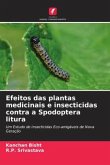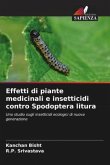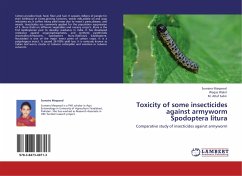Global circulation modals predict significant increase in atmospheric CO2 concentrations and would reach to 500 - 1000 ppm by the end of 21st century. Elevated CO2 (eCO2) influences crop growth, physiology, metabolism and dilute the biochemical constituents of host crop and in turn effect the growth and development of herbivore insects. The impact of eCO2 on leaf chewing insects is mainly of 'host mediated' in nature. Spodoptera litura Fab. is a polyphagous defoliating insect pest causing significant yield losses in several crops including edible (Sunflower, Helianthus annuus. L) and non edible (castor, Ricinus communis L.) oil seed crops. Measurement and quantification of effect of eCO2 on S. litura on these crops was investigated exclusively to understand the insect performance at eCO2 which is the major dimension of climate change. The data generated would be of immense help in development of pest models to predict the pest scenarios and to plan pest control measures during future climate change periods.








